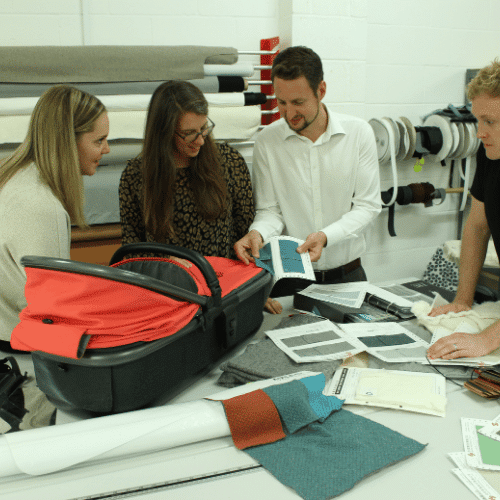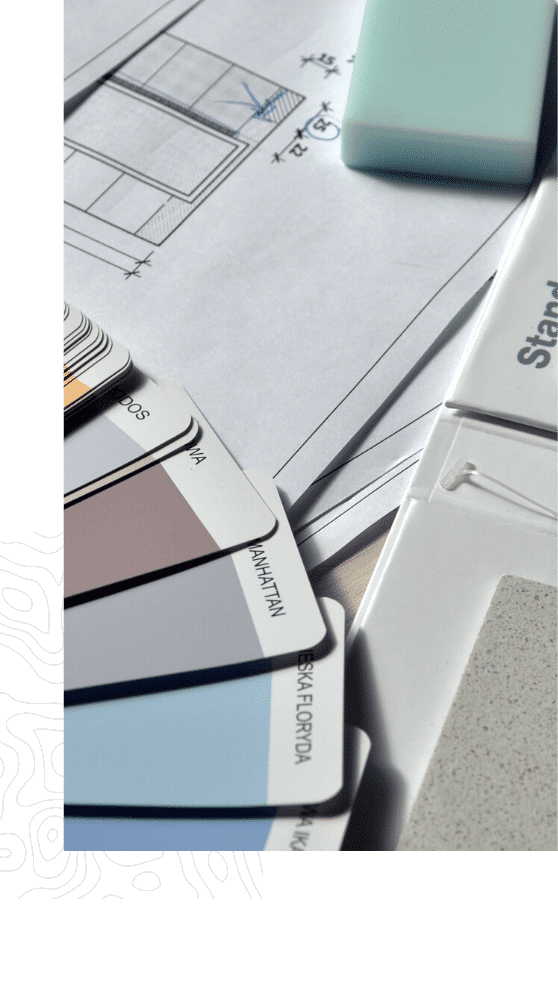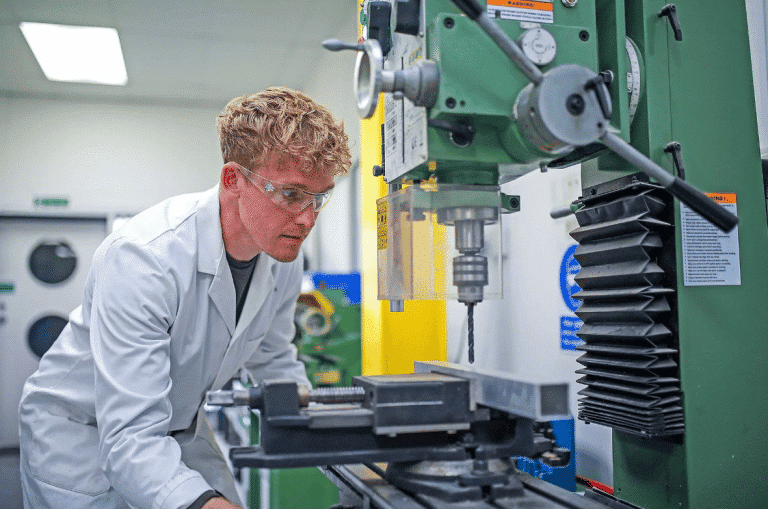Sample Review

Sample Review is a pivotal service ensuring your product, be it hard goods or textiles, stays true to its original design goals. Through consideration of the wider manufacturing process, meticulous examination, and constructive feedback, we bridge the gap between your vision and the final product, ensuring quality without compromising production viability.
Our Process
Initial Product Examination and Benchmarking:
Preparation: Before diving into the evaluation, it’s essential to have a comprehensive understanding of the product’s design goals, both aesthetically and functionally. This means clarifying with you the end goal and current critical objectives.
Benchmarking: At this juncture, it is worthwhile establishing key benchmarks for the sample assessment. It might be that there is a key competitor product it must outperform for example. We would establish a method for measuring the sample against this benchmark. This isn’t just a surface-level assessment but a deep dive into every intricate detail: from material quality, weight, colour matching in textiles to the alignment of components in hard goods.
Feedback Compilation and Manufacturer Collaboration:
Structured Feedback: Building upon the documentation from the first step, a structured feedback report is prepared. This isn’t just a list of discrepancies but a comprehensive guide detailing proposed changes, potential improvements, and areas of compromise. Often this includes visual evidence, like photographs or measurements, ensuring that there’s a clear record to refer back to during the feedback stage. This might involve updating the manufacturing specification. (If extensive updates are required then this might be at additional cost.)
Manufacturer Interaction: With the feedback report in hand, a dialogue is initiated with the manufacturer. This is a crucial step, as it’s not just about communicating discrepancies but understanding the manufacturer’s perspective. They might have insights on why certain deviations occurred or suggestions on how to rectify them cost-effectively.
Completion:
Iterative Sampling (if necessary): Sometimes, especially if the discrepancies are significant, a revised sample might be produced post-feedback. This iterative approach ensures that the final product closely aligns with the design goals. Reviewing further rounds of sampling will incur additional costs.
Approval & Sign-off: Once the sample aligns closely with the design benchmarks and meets the required quality standards, it can be approved. This sign-off is a green light, indicating that the product is ready to move into mass production.
Preservation of Design Integrity
At the heart of any product lies its design—a culmination of countless hours of ideation, iterations, and refinements. The design encapsulates not just the aesthetics but also the functional aspects, user experience, and brand essence. However, during the transition from design to production, this integrity can sometimes be compromised due to various manufacturing constraints and the overarching goal to optimise costs.
The Sample Review service acts as a checkpoint, ensuring that the original vision and objectives of the product are not lost. By meticulously comparing the sample against the original design specifications, any deviations can be promptly identified. This is particularly important for products that rely heavily on design differentiation in the market. For instance, in the fashion or consumer electronics industry, a minor alteration can significantly impact a product’s market reception.

Mitigation of Costly Production Errors
Manufacturing is an investment, often involving considerable resources, both in terms of time and capital. Once production scales up, any flaw or oversight in the initial batches can lead to significant financial repercussions. Beyond the immediate monetary cost, there’s the added expense of rework, potential recalls, and the intangible damage to brand reputation.
By investing in a thorough Sample Review, potential issues are flagged at an early stage. It’s considerably more cost-effective to make adjustments after a sample review than post full-scale production. Consider, for instance, a piece of apparel where the fabric doesn’t sit right, or a gadget where a button is slightly too tight to smoothly press. Rectifying such issues post mass production can be a logistical and financial nightmare. The sample review service acts as a proactive measure, ensuring that the final product is primed for success, thus safeguarding the investment made in the project.


Streamlined Communication & Feedback Loop
Manufacturers and product developers often operate on different wavelengths. While the former is rooted in the practicalities of mass production, the latter is more invested in the user experience and perceived value. This divergence can sometimes lead to miscommunication or misinterpretation of design intents.
The Sample Review service bridges this gap, offering a structured platform for feedback. With a dedicated review process, feedback to manufacturers is clear, concise, and constructive. This clarity reduces back-and-forth, accelerates turnaround times, and ensures that both parties are aligned in their objectives.
Additionally, the sample review process is also an avenue for manufacturers to provide their insights. Their hands-on experience with materials and processes can sometimes lead to suggestions that enhance product feasibility without diluting its value proposition. This collaborative approach, rooted in mutual respect and understanding, can yield a product that is not only highly desirable but also manufacturable in an economically viable manner.

FAQs
What is a sample review?
A sample review is a rigorous evaluation process conducted before a product enters mass production. This involves assessing production samples against the design brief, specifications, and quality standards. The review aims to validate that the prototype or pre-production sample mirrors the envisioned product, both in terms of design and functionality. This process is applicable, and highly necessary, to most product types including both hard goods products and items made pre-dominantly from textiles.
Why is a sample review important in product development?
The translation of a design into a mass-produced item often involves adjustments to make the production process more efficient and cost-effective. These adjustments, while they might make sense from a manufacturing perspective, can sometimes compromise the original design intent and the product’s overall quality and functionality.
In the transition from design to production, many factors come into play:
- Material Choices: The exact material specified in the design might not be readily available, or it might be more expensive than alternatives. Manufacturers might propose substitutes that, while similar, might not have the same look, feel, or performance characteristics as the original.
- Machinery and Tools: The manufacturer’s available machinery and tools might not be perfectly suited for the design’s nuances. As a result, certain design features might be altered or simplified to fit the tools at hand.
- Labour Skills: Highly specialised designs might require skilled labour that could be expensive or not readily available. In such cases, design elements might be adjusted to fit the skill set of the available workforce.
- Cost Reduction: Manufacturers, aiming for profitability, might recommend changes that reduce production costs. These could include simplifying complex parts, reducing the number of components, or using faster production methods. While these changes might make the product cheaper to produce, they can also lead to a decrease in product quality or durability.
Given these potential pitfalls, the sample review process becomes even more crucial. By rigorously evaluating the pre-production sample, stakeholders can ensure that any changes made during the manufacturing process have not adversely affected the design’s integrity, functionality, or quality. If discrepancies are identified, they can be addressed before full-scale production begins, ensuring that the end product remains true to the original design vision while also being feasible and economical to produce.
Who should conduct a sample review?
A sample review is a critical juncture in the product development process and should ideally involve a collaborative effort from various experts to ensure a comprehensive evaluation. Here are the key participants:
- Product Designer: The designer is crucial as they carry the original vision of the product. They understand the nuanced design choices and can ascertain whether the manufactured sample retains the intended aesthetics and functionality. Their perspective ensures that the core principles of the product’s design remain intact.
- Engineers: Engineers bring technical expertise to the table. They can evaluate the sample for structural integrity, functionality, and ensure that the product meets technical specifications. Their input can be invaluable in identifying any discrepancies that might affect the product’s performance.
- Quality Assurance Experts: These professionals are trained to spot inconsistencies, defects, or deviations from the set standards. They ensure that the sample meets quality benchmarks, and their feedback can be vital in maintaining product consistency during mass production.
- Yourself (or the Product Owner): As the product owner or main stakeholder, your perspective is essential. You have an understanding of the market, user expectations, and the product’s value proposition. Your feedback can help in striking the right balance between design integrity and manufacturability.
- External Parties: If the product development involved external consultants or agencies, their participation can provide an unbiased viewpoint. They can evaluate the product without any preconceived notions, ensuring that the sample meets the intended market standards. This might include a key retail buyer and fabric engineer for example.
If assembling a comprehensive team as described above isn’t feasible, then the next best alternative is to have the product designer conduct the review. Their expertise, combined with the product owner’s feedback, will ensure that the most critical aspects of the product are evaluated. However, it’s essential that feedback is measured, concise, and focused on achieving a minimum viable product, especially for the initial batches. This approach allows for the product to hit the market, gather user feedback, and make iterative improvements in subsequent production runs.
What are the key elements to evaluate in a sample review?
A sample review directly influences product quality by acting as a final checkpoint before mass production. By meticulously assessing the prototype or pre-production sample, any discrepancies or deviations from the intended design and functionality are identified. This not only ensures that the final product aligns with the brand’s quality standards but also minimises the risk of customer dissatisfaction or potential recalls. The collaborative approach of a sample review, where feedback from manufacturers is integrated, also guarantees that the product is optimised for both quality and production feasibility.
How does a sample review impact product quality?
A sample review directly influences product quality by acting as a final checkpoint before mass production. By meticulously assessing the prototype or pre-production sample, any discrepancies or deviations from the intended design and functionality are identified. This not only ensures that the final product aligns with the brand’s quality standards but also minimises the risk of customer dissatisfaction or potential recalls. The collaborative approach of a sample review, where feedback from manufacturers is integrated, also guarantees that the product is optimised for both quality and production feasibility.
Overview of Sample Review
Embarking on the product development journey is an exciting venture, filled with innovation and possibilities. However, a critical juncture in this journey is the transition from design to actual production. This is where the Sample Review service becomes instrumental. Whether you’re delving into hard goods or textiles, this service is about ensuring your product aligns with its intended design, all while making certain it’s manufacturable in a cost-effective and viable manner.
- Ensuring Fidelity to Design: As you progress from a design on paper to a physical sample, there are myriad factors at play that might cause the product to deviate from its original vision. Factors such as material behaviour under specific manufacturing processes, limitations of mass production, and manufacturer interpretations can all lead to unexpected results. The Sample Review process ensures these deviations are caught early, analysed, and rectified, ensuring the end product resonates with its original design ethos.
- Balancing Perfection with Viability: While it’s natural to aspire for a ‘perfect’ product, it’s crucial to strike a balance between design purity and commercial viability. A review of manufacturing samples doesn’t just spot errors or deviations; it identifies areas where compromise between design and production might be necessary, ensuring you don’t end up with an immaculate but un-manufacturable product.
- Communication – The Linchpin of Success: One of the most critical aspects of the Sample Review process is clear, effective communication with the manufacturer. An experienced team, like ours, doesn’t just understand design; we appreciate the nuances of production, often seeing things from a manufacturer’s perspective. This balanced viewpoint ensures feedback is not only precise but also constructive, fostering a positive and productive relationship with the manufacturing entity. On the contrary, without this expertise, the feedback loop can become an exhausting cycle of miscommunication and missed expectations.
Is this a service you can undertake on your own? The simple answer is, yes. You can certainly review samples, especially if you’re deeply familiar with your product’s design and objectives. However, there are undeniable benefits to having an experienced team supporting you. Our team has overseen countless sample reviews, honing an instinct for spotting potential issues, understanding the intricacies of manufacturing constraints, and adeptly navigating the nuances of manufacturer interactions. It’s this expertise that ensures the feedback loop is efficient and effective, preventing the frustrating scenario of feeling like you’re ‘going in circles’.
Further, while it’s feasible to conduct the review solo, the true challenge often lies in post-review actions. Articulating feedback, suggesting alternatives, and ensuring clarity in communication are all facets where professional experience can be invaluable. The last thing any innovator wants is to alienate their manufacturing partner through miscommunication or unrealistic demands. An experienced intermediary, like our team, can mitigate this risk, acting as a bridge between your aspirations and the manufacturer’s capabilities.
In conclusion, the Sample Review service is more than just an examination of a product sample. It’s a holistic process that blends design fidelity, manufacturability, commercial factors and effective communication into a seamless experience, paving the way for a product that is both high-quality and manufacturable.
Whether you choose to walk this path alone or with experienced guidance, understanding the importance and nuances of the Sample Review process is crucial for any product’s journey from concept to consumer.